HISTORIC ELIZABETH CHAPEL CEMETERY
BY RICKEY ROBERTSON
Throughout our area here in western Louisiana are many historic cemeteries. Many of these cemeteries are easily accessible and many are not. A cemetery can give people plenty of information on those people who are buried at that location. A grave marker gives us the name's , birthdates and death dates of the person buried there, and on the older markers there are often other bits and pieces of information. And if they have a veteran's marker on it this tells of the person's military service. In Vernon Parish there is an old cemetery known as Elizabeth Chapel Cemetery that we will look at in this story. As you travel north out of Leesville on La. Hwy. 117, known as the Kurthwood Road, about 3 miles you will see Jackson Road on the left. When you turn onto Jackson Road from La. Hwy. 117, you can easily see the cemetery about 200 yards ahead.
When you arrive you will see this old cemetery that is well kept and neat and has many graves located in it, with many of these graves surrounded with wrought iron fencing. It is a quiet place where you can smell the cedar trees and feel the breeze blowing through the pine trees. At the entrance to this cemetery is a marker that tells the history of this cemetery and the church and school that was once located here. In the 1850's the very first Episcopal Chapel was built here by Elizabeth Lott Martin Faircloth. In this era there was no Vernon Parish. The site where Elizabeth Chapel was located was actually in Rapides Parish. Present day Vernon Parish was then part of Natchitoches, Sabine and Rapides Parishes and would not come into existence until 1871. One thing ironic about this Episcopal Chapel was that during this time the Archbishop of the Episcopal Diocese in Louisiana was Bishop Leonidas Polk. Looking forward a few years Leonidas Polk was Lt. General Polk of the Confederate Army, known as the Fighting Bishop, who was killed in action during the fighting around Pine Mountain, Georgia and who Fort Polk, located today in Vernon Parish, is named for. The cemetery's oldest graves date to the year 1860 and were members of the Stephen's family.
At Elizabeth Chapel Cemetery are buried many of the first elected officials of present day Vernon Parish and some from the days of this area being in Rapides Parish. Buried in this cemetery is Mark McAlpin, who was the very first State Representative for the new Vernon Parish. Mark McAlpin was a plantation owner who resided south/southwest of Anacoco, La. in then Sabine Parish. When Louisiana seceded from the Union, he was one of many men from the area near Anacoco who gathered at Anacoco Baptist Church and were mustered into the service of the Confederate States Army as Company B 17th Louisiana Infantry. This unit fought with distinction at Shiloh and Vicksburg and held the Yankee attack back as the Confederate units retreated into the town of Vicksburg. When the Confederates surrendered at Vicksburg in July 1863, Mark was across the Mississippi River with part of the 17th Louisiana guarding supplies for the besieged fortress. When Vicksburg surrendered Mark and the others retreated and joined up with General Richard Taylor. He later fought at Mansfield and Pleasant Hill and throughout the campaigns that pushed the Yankees back to Baton Rouge. While away in the army, a young Confederate soldier, lost from his unit, was sitting under the big oak trees at Mark's plantation strumming on a banjo when several Union Army scouts rode up. They asked the young Johnny Reb what he was doing. He replied "just plucking away". Little did he know but when Mark returned he named his plantation "Pluckaway". He was the State Representative when the new "reconstruction parish" of Vernon was formed and Confederate soldiers were allowed to vote again under the 15th Amendment. In the legislature he fought continuously to have all the Union Army detachments removed from Louisiana. In March of1876 Mark contracted typhoid fever and passed away on March 31, 1876 at the age of 49. He is buried in Elizabeth Chapel Cemetery with his wife and eleven of his twelve children. And due to his efforts in 1877 the Union Army garrisons were removed from Louisiana.
Also buried in the cemetery is Zachary Taylor Craft who served as Clerk of Court from 1890 until 1900. Zachary Taylor Craft was married to Ellender Rebecca McAlpin, daughter of Mark McAlpin, and after her death he remarried to Louisa McInnis. Zachary was also a former Confederate soldier who served as a cavalryman in Co B Yerger's Regiment 1st Mississippi Cavalry. He fought as a cavalryman in many battles and skirmishes and ironically, his unit was under the command of Lt. General Leonidas Polk when the general was killed in action. When his unit surrendered to the Union Army at Citronelle, Alabama in 1865, the Yankees did not like the Confederate cavalrymen who refused to swear allegiance back to the U.S. They were listed as prisoners of war and were placed on a Yankee prison train for 13 days with little food or water. They were finally shipped back to Jackson, Mississippi where the Union forces released them. With nothing left of the old home place in Mississippi he and his brother moved to Sabine Parish just south of present day Hodges Gardens. In 1867 he married and settled in the area where he was very involved in local politics and events. In 1890 he became Clerk of Court for Vernon Parish. In 1890 the State of Louisiana began issuing Confederate pensions to ex-Confederate veterans or their widows of eleven dollars per month. The old veterans had to show proof of their service in the Confederate Army and these records had to be presented to the local Clerk of Court where he verified them and signed off on the application. This old Confederate veteran himself signed off on from 800 to as many as 1200 of these pension applications. And today they are on file with the La. Secretary of State's Office in Baton Rouge, La. He is buried with his 2 wives and several of his children, including his son Mack McAlpin Craft named after his grandfather.
Another early elected official buried here is Sheriff William H. Moore . Sheriff Moore also was an ex Confederate cavalryman who served with Company D 1st Louisiana Cavalry. He entered the Confederate Army in this unit when it was formed in 1861. This cavalry unit fought and skirmished throughout Kentucky and Tennessee and fought heavily at Murfreesboro and Chickamauga. William Moore entered as a private and during the war was promoted to Corporal. The unit was disbanded in March 1865 and he came back to his home. He was elected Sheriff of the new parish and was the chief law enforcement officer of the parish. He and members of his family are buried here at Elizabeth Chapel.
One other person buried here we will look at briefly is Dr. Wiley Kaufman Faircloth. His marker reads he was born in 1843 in Sabine County Republic of Texas. He was an assistant surgeon in the Confederate Army and he later practiced medicine in and around Leesville until his death in 1911.
We have touched on just a short history of 4 men buried in this cemetery and the history of the site. These 4 men were very influential in the politics of Vernon Parish and their ancestors continue to do so even in the year of 2015. And I know a lot of history about these men. Mark McAlpin is my fourth great grandfather, Zachary Taylor Craft is my third great grandfather and whom I have his Confederate Prisoner of War Medal, and William Moore is my third great uncle and it is my pleasure to share the story and history of Elizabeth Chapel and my ancestors with my readers. Stop and visit this historic site soon !
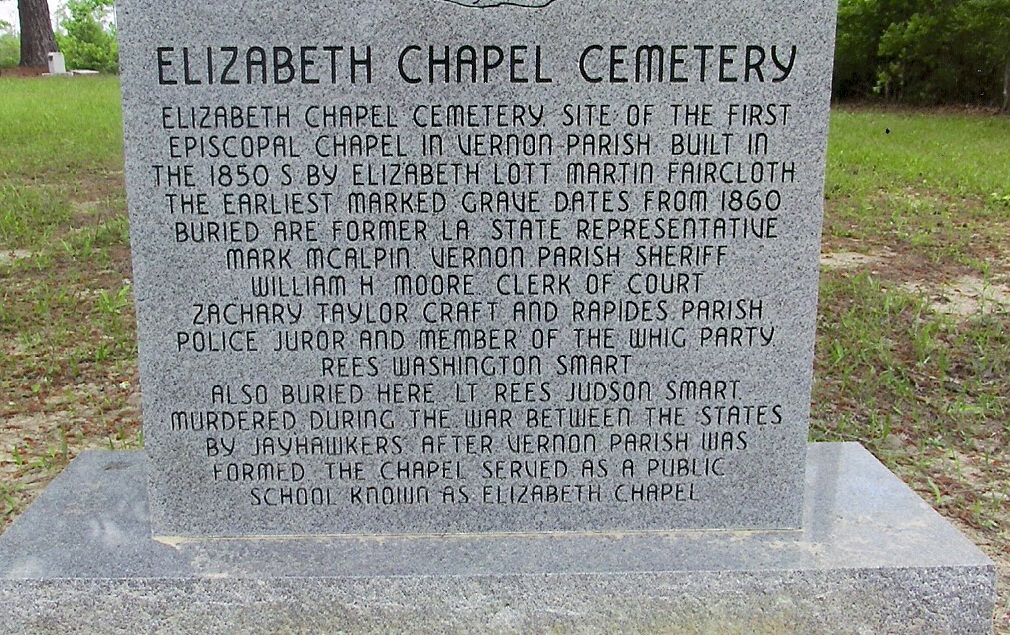
Monument to Elizabeth Chapel Church and Cemetery and listing of some of the history of the location. (Rickey Robertson Collection)
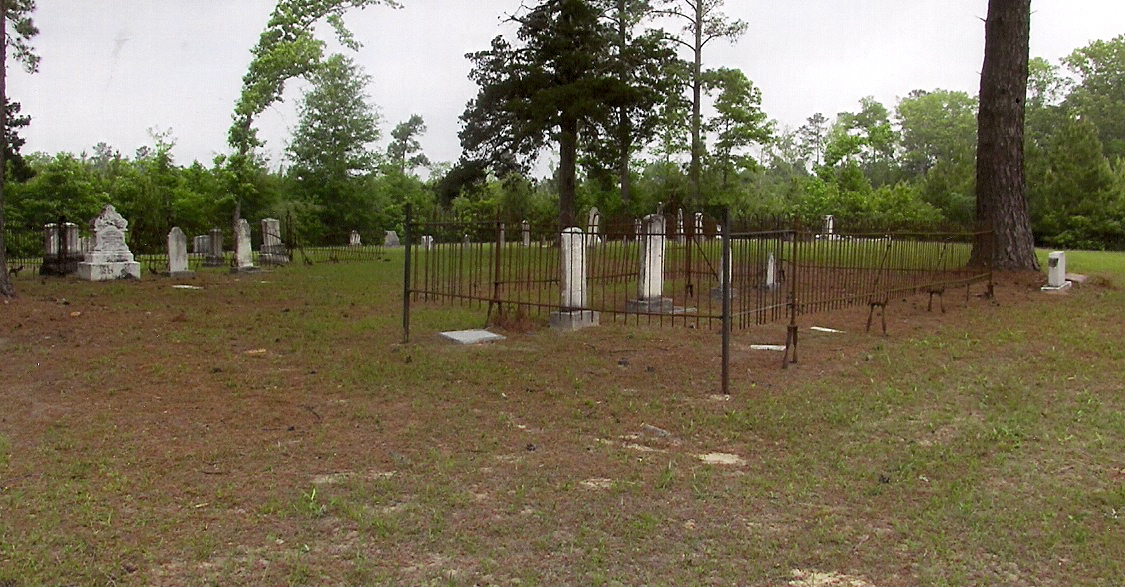
Photograph of Elizabeth Chapel Cemetery located in Vernon Parish, La. (Rickey Robertson Collection)
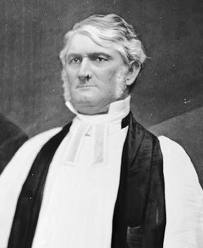
Archibishop of the Episcopal Diocese of Louisiana was Leonidas Polk, later to become a Lt. General in the Confederate Army. (Rickey Robertson Collection)
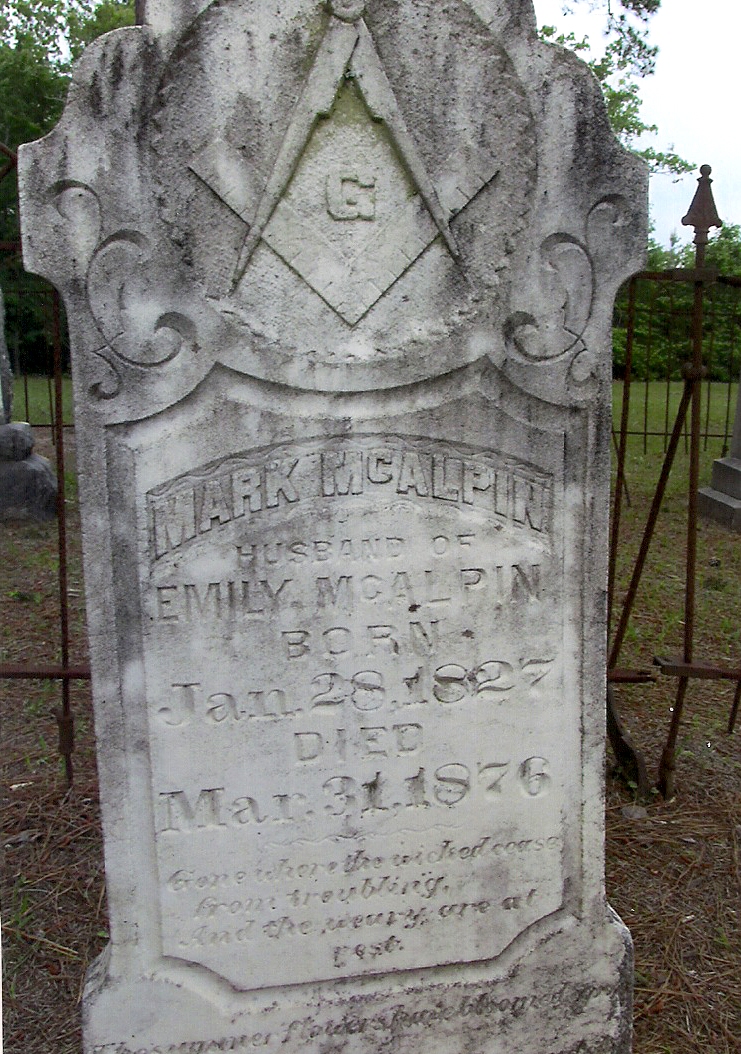
Gravesite of Mark McAlpin, first State Representative for Vernon Parish, in Elizabeth Chapel Cemetery. (Rickey Robertson Collection)
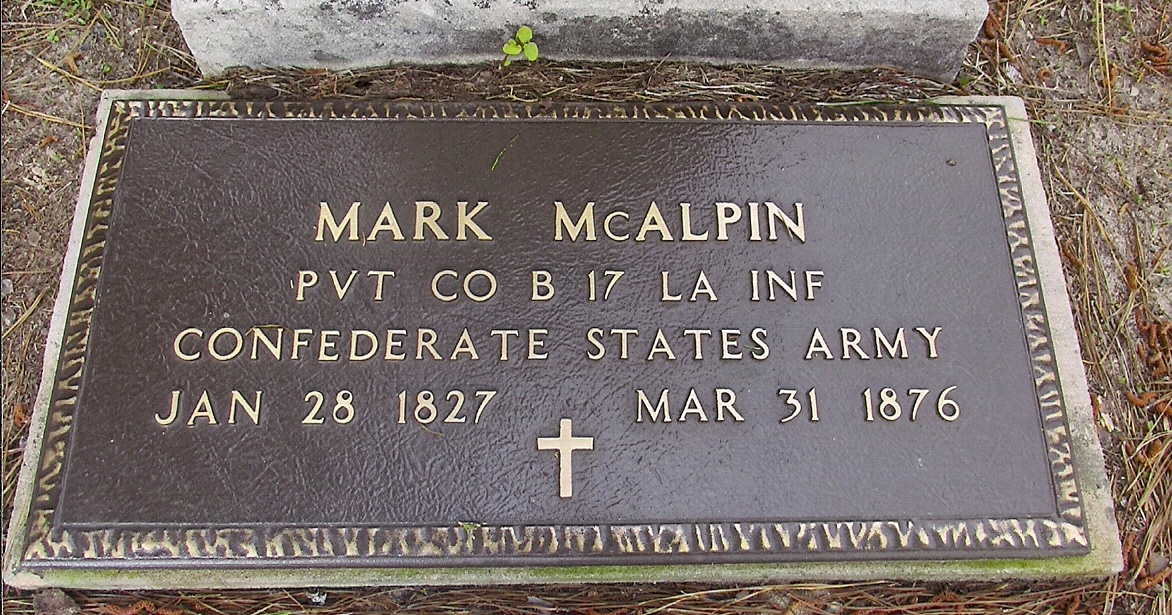
Confederate gravemarker for Mark McAlpin in Elizabeth Chapel Cemetery. (Rickey Robertson Collection)
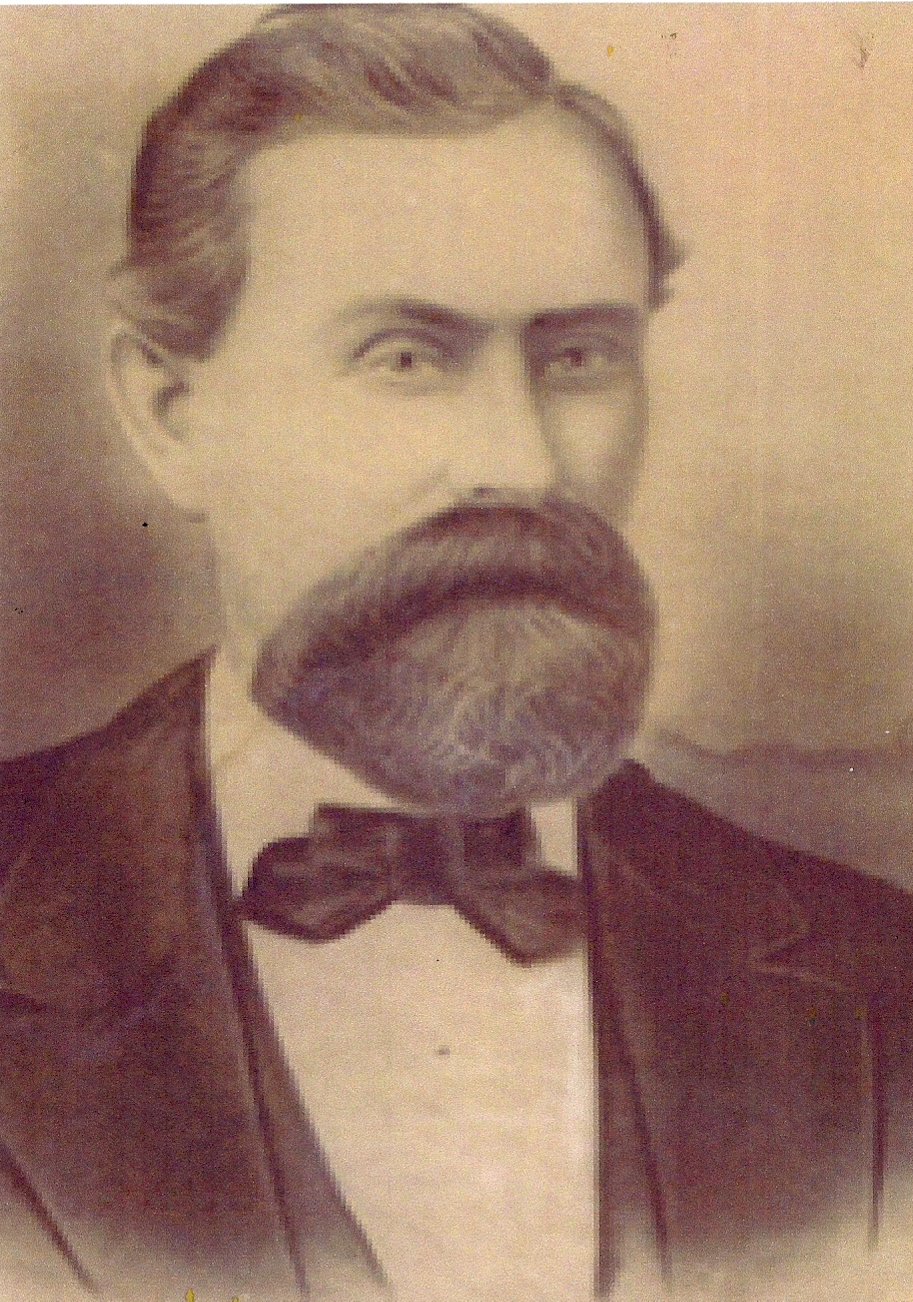
Portrait of Mark McAlpin. (Rickey Robertson Collection)
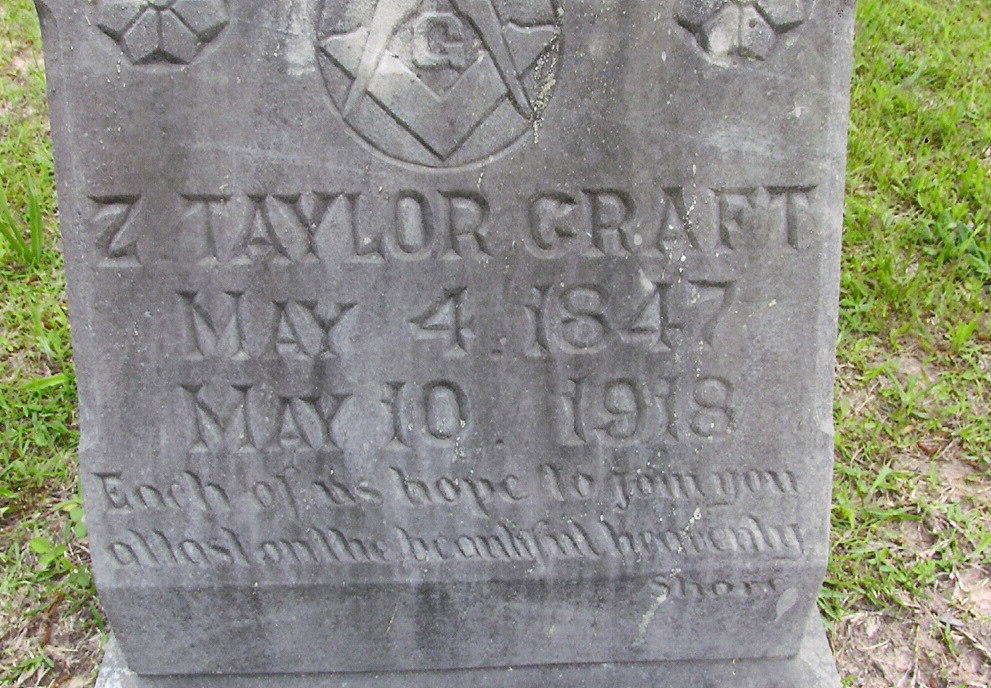
Gravesite of Zachary Taylor Craft, Clerk of Court in Vernon Parish from 1890 to 1900. (Rickey Robertson Collection)
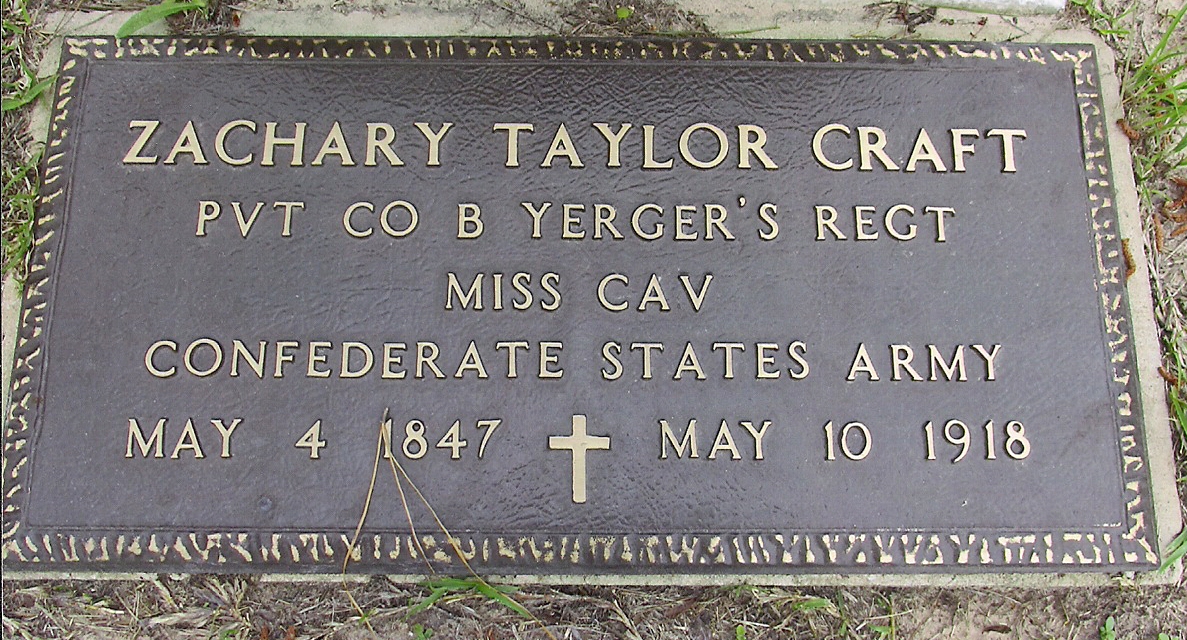
Confederate gravemarker for Zachary Taylor Craft in Elizabeth Chapel Cemetery. (Rickey Robertson Collection)
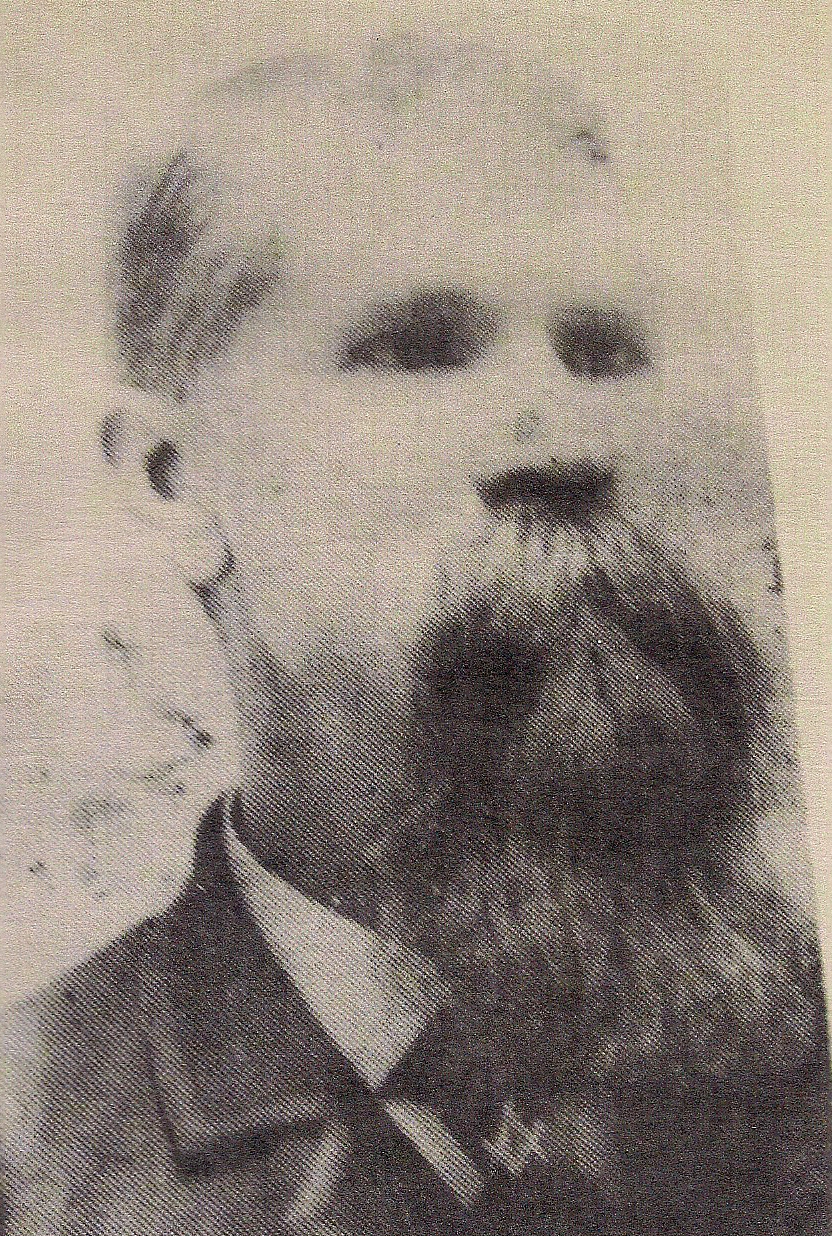
Picture of Zachary Taylor Craft in the Vernon Parish Clerk of Court's Office in Leesville, La. (Rickey Robertson Collection)
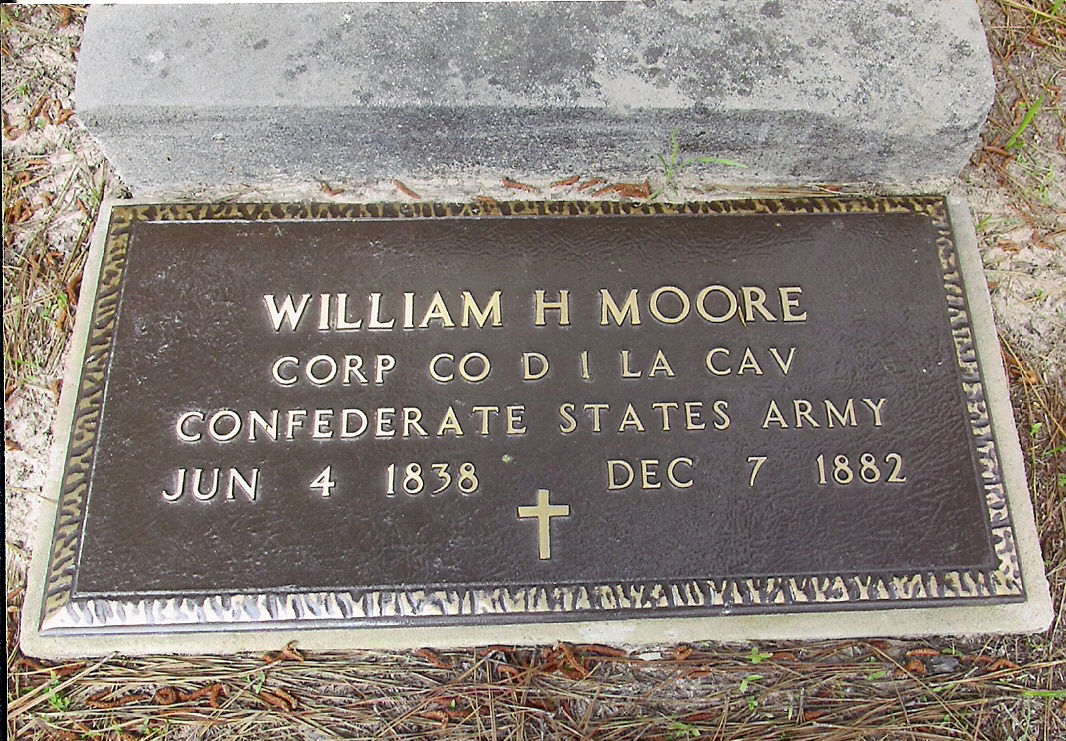
Confederate gravemarker for Sheriff William H. Moore in Elizabeth Chapel Cemetery. (Rickey Robertson Collection)
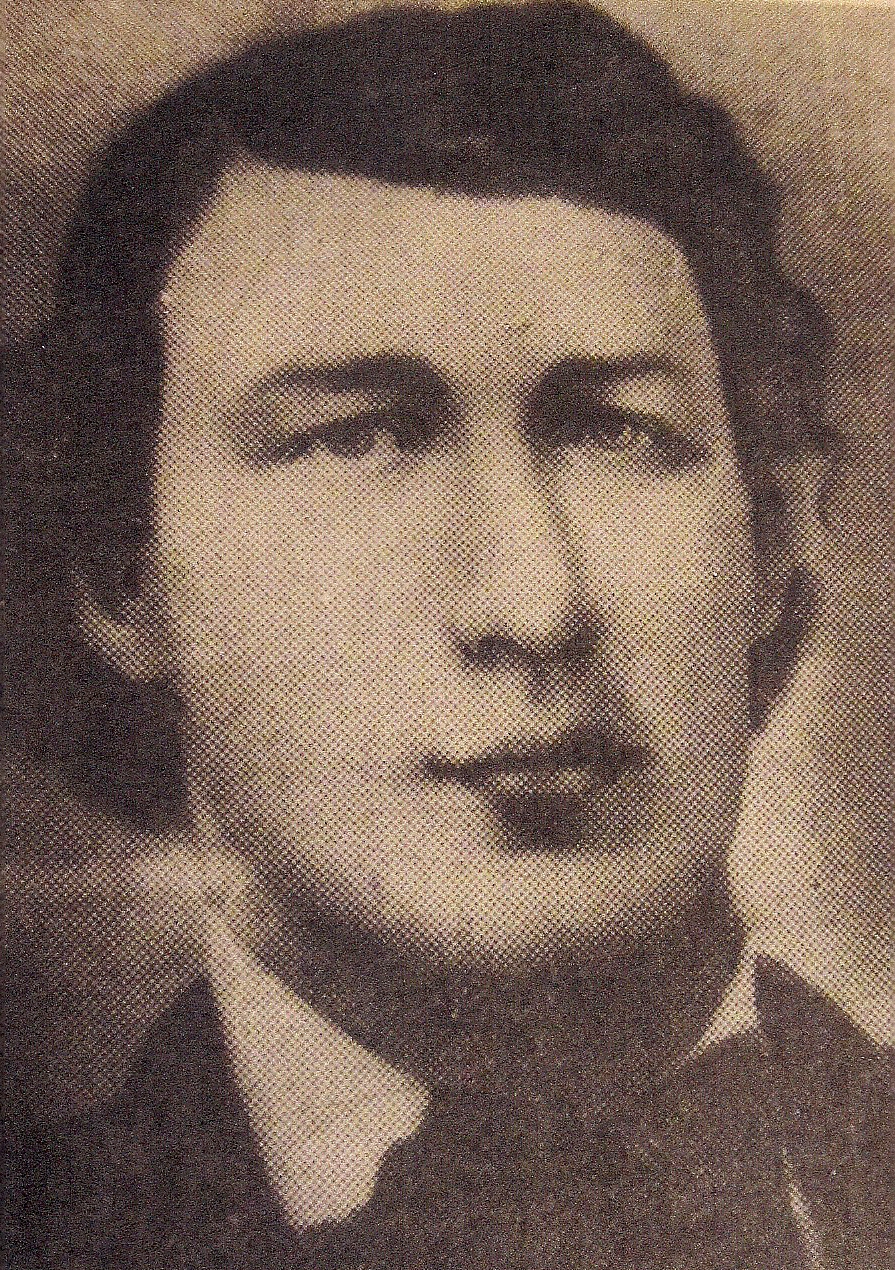
Portrait of Sheriff William H. Moore of Vernon Parish, La. (Rickey Robertson Collection)
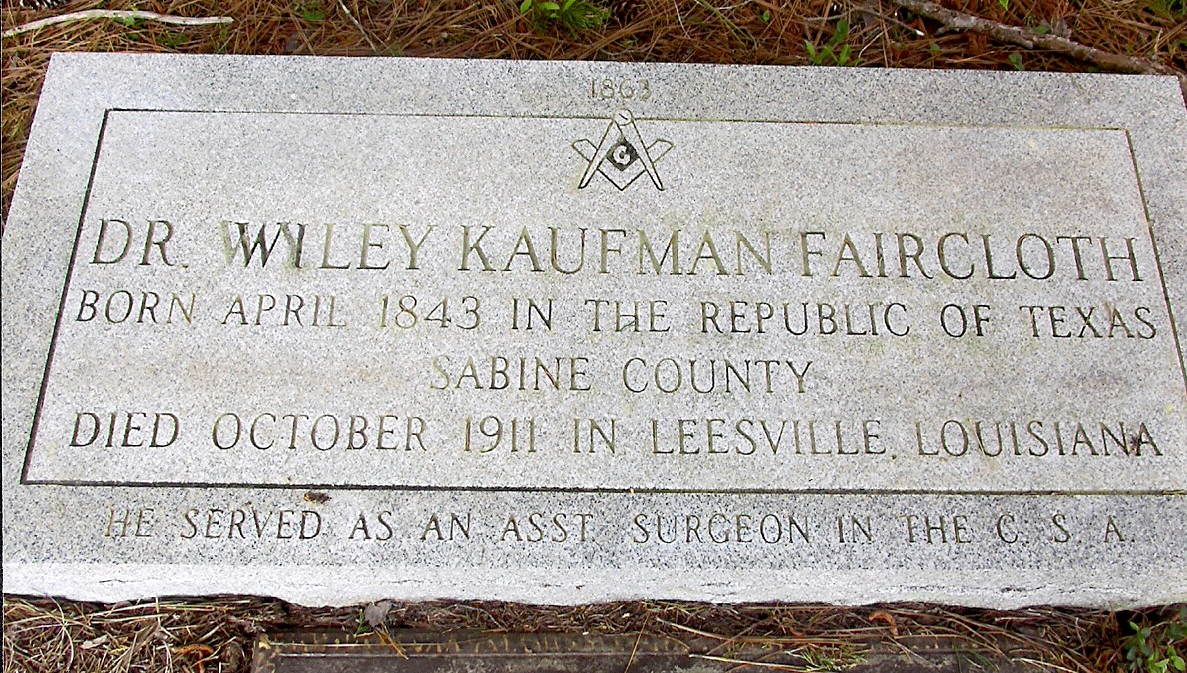
Gravemarker of Dr. Wiley Kaufman Faircloth in Elizabeth Chapel Cemetery. (Rickey Robertson Collection)